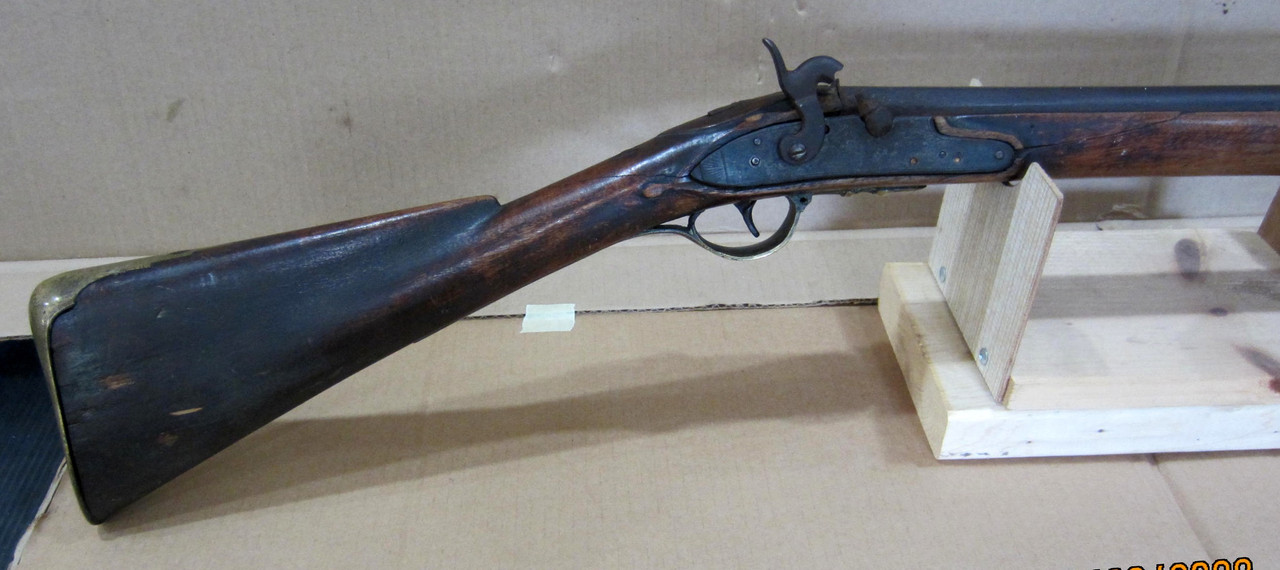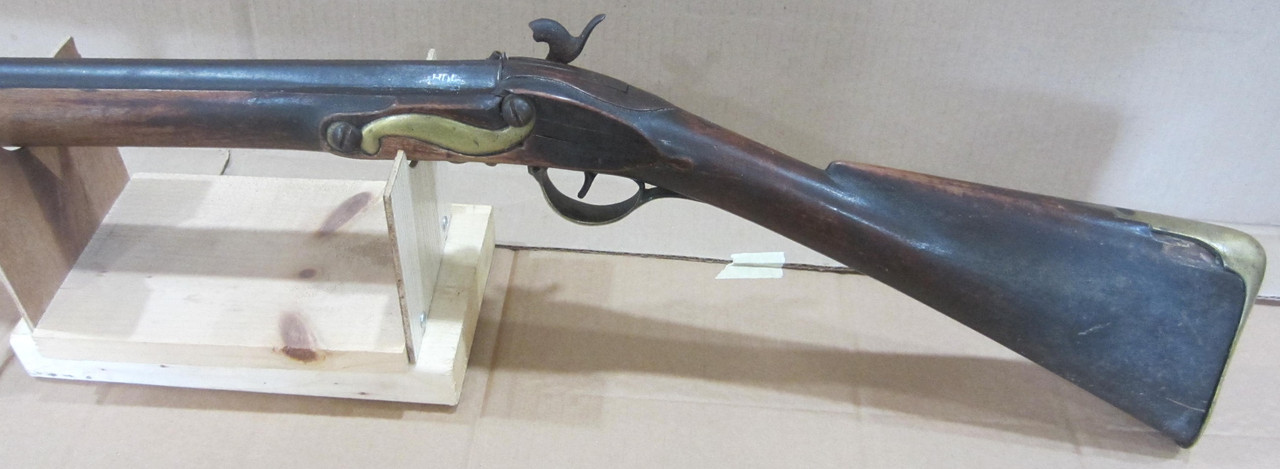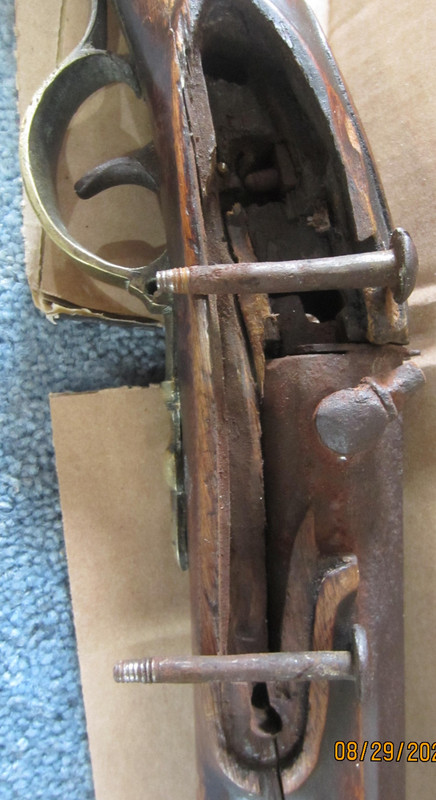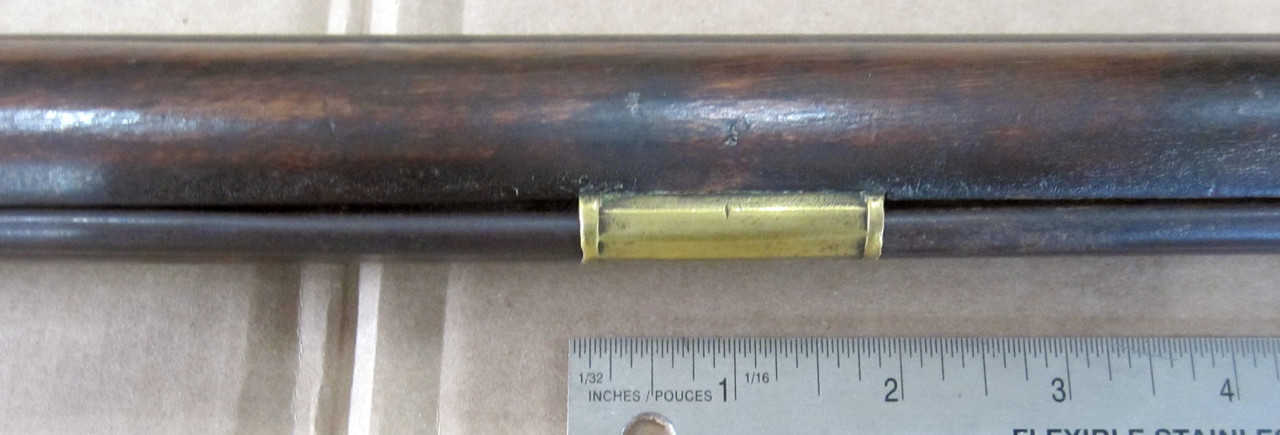Well, it's loooong and I believe it was built in America, so I guess that makes it an American longrifle

.
I purchased this today and, for the life of me, can not determine what I have.
-It is obviously made up from salvaged parts and, in my opinion, the design was influenced by the Brown Bess.
-The barrel is 45 1/4" long and, based on the location of the front sight, I suspect it was originally in the area of 46" to 48" long. I also suspect it was shortened when this musket was built. The barrel has a top flat tapering from 1/2" at the breech to 0" at the muzzle. The smooth bore measures 0.780", give or take0.005" or so.
- The initials on the barrel at the breech appear to be "NH" when viewed from the right side. The "N" is questionable.
-I had originally thought the nose cap had been set back, but now believe it is as-built.
- The gun had sling swivels which appear to have been well used.
-The gun was originally flint and the back of the lock plate is marked "PM". The lock plate is 6 1/4" long and 1 3/16" wide. The bridle is not fully seated and prevents the lock from fully seating in the mortise (seized screws).
- There is no writing on the face of the lock, but there are traces of a floral or sunburst design.
- The lock nails are obviously Blacksmith forged.
- A pretty neat repair was done at the break in the wrist, but I think late in the gun's life.
- The overall architecture of the stock brings to mind a Brown Bess with a straighter and softer butt profile. There is a slight palm swell at the entry thimble.
- The wood species appears to be English/European walnut - not black walnut.
And now for what I am thinking (and hoping): The area this came out of is a sea-faring area and had close trade relations with the New England colonies/states during the 18th and 19th centuries. It was a prime hunting ground when I was ferreting out Besses and the like back in the 1970's and 80's. It would not be uncommon to come across a New England gun. I think (as much hope as think) this could be a New England made Militia musket. If I were to get really wild eyed, I might envision it being a Committee Of Safety musket. I should be so lucky!
Please pass along your thoughts. They will be most appreciated
I can provide additional photos and info on request.

















